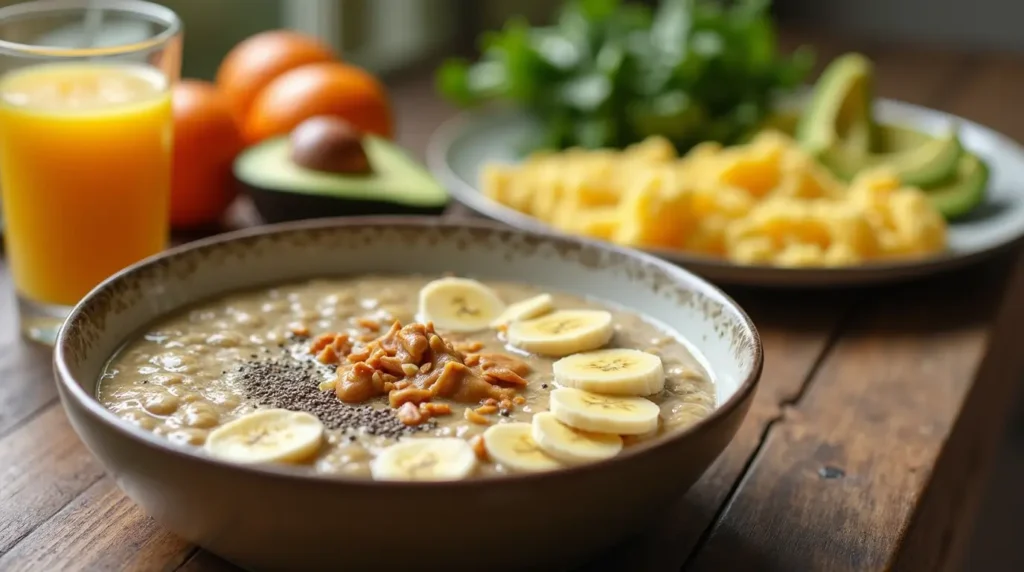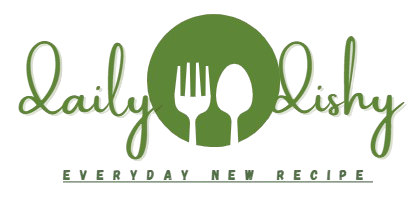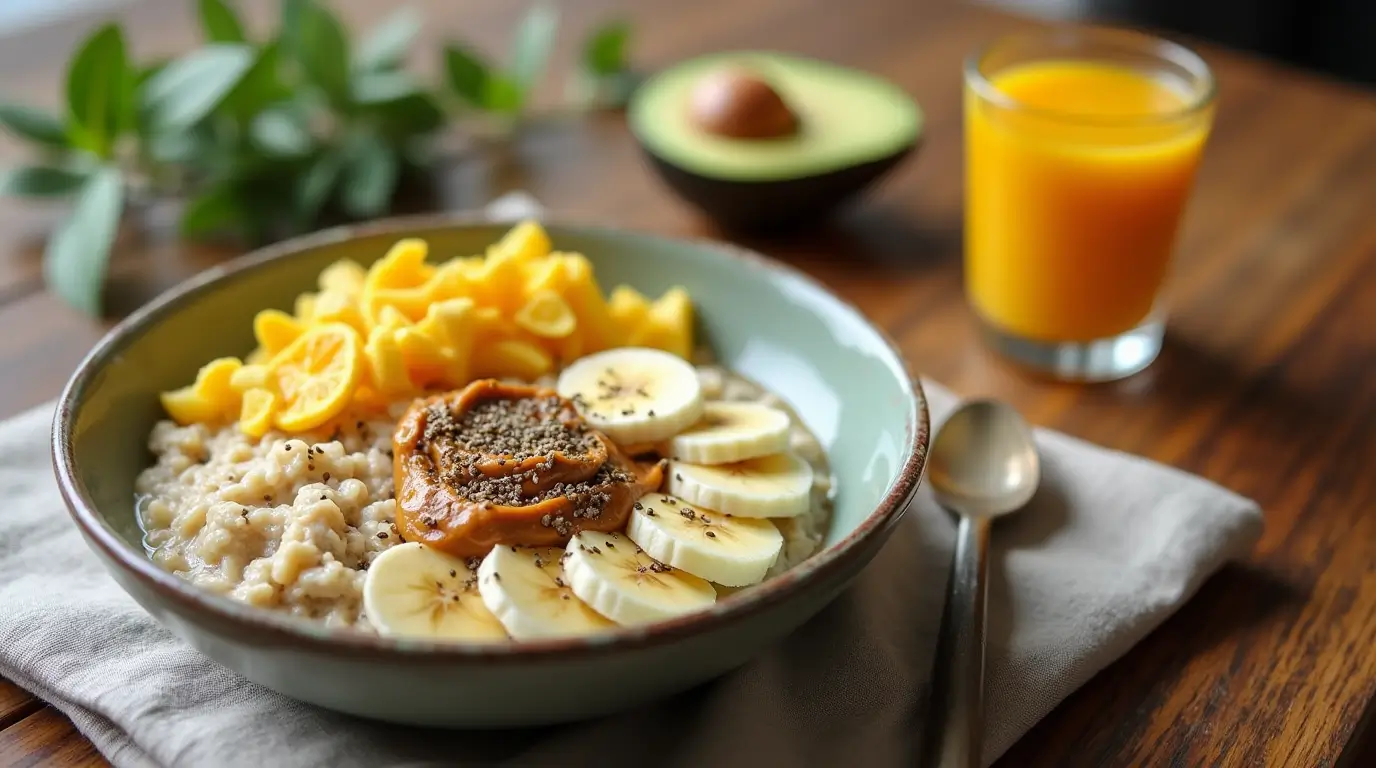Starting your day with a Low FODMAP breakfast can truly transform how you feel—whether you’re looking to ease digestive discomfort or simply fuel your body with nourishing, energy-boosting foods. If you’ve been struggling with bloating or stomach issues, a Low FODMAP diet might be just what you need to enjoy your meals without worry. This breakfast is all about deliciously simple ingredients that are gentle on your digestive system while still being satisfying and full of flavor.
Table of Contents :
From creamy oats and protein-packed eggs to fresh fruits and healthy fats, this Low FODMAP breakfast offers endless possibilities to keep you feeling great all morning. It’s a great way to start your day right, with nutrient-rich ingredients that provide lasting energy and help you stay focused. Ready to make your mornings better? Let’s dive into this easy and tasty recipe that will kick-start your day with a smile!

1. Key Benefits of a Low FODMAP Breakfast
Starting your day with a Low FODMAP breakfast isn’t just about eating something delicious—it’s a game changer for your gut health and overall well-being. If you’re managing digestive issues like IBS or simply want to feel better in the morning, this type of breakfast can make a huge difference. Here’s why:
1. Supports Digestive Health
Low FODMAP foods are designed to be gentle on your digestive system, reducing the risk of bloating, discomfort, and other gut issues. Unlike high FODMAP foods, which can cause a flare-up in sensitive individuals, these breakfast choices are gut-friendly, making your digestive system feel at ease right from the start of your day.
2. Provides Long-Lasting Energy
Many people report feeling more energized after switching to a Low FODMAP breakfast. That’s because the combination of easily digestible proteins, healthy fats, and slow-releasing carbs keeps you full and energized longer. Whether you’re getting ready for a busy workday or tackling a morning workout, this type of breakfast helps you feel fueled without that mid-morning energy crash.
3. Reduces Bloating
Struggling with bloating or gas? A Low FODMAP breakfast can help. By cutting out high FODMAP ingredients, you minimize the chances of triggering bloating or discomfort. You’ll feel lighter and more comfortable throughout the day, which is always a win.
4. Improves Overall Well-Being
When you take care of your digestive health, you’ll notice an overall improvement in your mood and energy. A Low FODMAP breakfast helps create a solid foundation for a healthier day, setting the tone for balanced nutrition and comfort. Plus, making this kind of mindful food choice can reduce the stress of wondering if what you ate might upset your stomach.
5. Helps You Create Healthy Habits
Starting your day with a Low FODMAP breakfast makes it easier to maintain healthy habits throughout the day. You’re laying the groundwork for better eating choices and learning how to listen to your body’s needs, leading to a healthier lifestyle in the long run.
Why It’s Worth the Switch
Adopting a Low FODMAP breakfast might seem challenging at first, but the benefits are worth it. Whether you’re dealing with IBS, trying to manage your gut health, or simply looking for a breakfast that makes you feel amazing, a Low FODMAP breakfast is a simple yet powerful way to kickstart your day.
By embracing the digestive benefits, energy-boosting properties, and overall comfort of a Low FODMAP breakfast, you’re not just fueling your body—you’re setting yourself up for a healthier, happier day.
2. Ingredients for a Perfect Low FODMAP Breakfast
Creating a delicious and gut-friendly Low FODMAP breakfast starts with the right ingredients. The beauty of this diet is that there are plenty of simple, tasty options that won’t upset your digestive system. Below is a list of key ingredients to help you create the perfect breakfast, full of flavor and health benefits!

Essential Ingredients:
- Eggs – A great source of protein and easy to digest, eggs are a breakfast staple. Whether you like them scrambled, poached, or hard-boiled, they’re a versatile choice that fits perfectly into a Low FODMAP meal.
- Lactose-Free Milk or Plant-Based Milk – For those who are lactose intolerant, opting for lactose-free milk or plant-based alternatives like almond milk, rice milk, or coconut milk ensures your breakfast is creamy without the discomfort.
- Oats – A wonderful whole grain that’s both filling and fiber-rich, oats are naturally low FODMAP when consumed in moderation. They make a hearty base for porridge or overnight oats and provide sustained energy throughout the morning.
- Bananas – A go-to fruit for many on the Low FODMAP diet, bananas are easy on the stomach and provide potassium, which supports muscle function and hydration.
- Blueberries (or Strawberries) – Berries are not only low FODMAP but also packed with antioxidants. Blueberries and strawberries are perfect for adding a burst of flavor and nutrients to your breakfast.
- Nuts (Almonds or Walnuts) – Nuts add a satisfying crunch and are a great source of healthy fats, but make sure to stick to small portions (about 10 almonds or 5 walnut halves) to stay within the Low FODMAP guidelines.
- Chia Seeds – These tiny seeds are packed with omega-3s, fiber, and protein, making them a powerful addition to your breakfast. They’re also easy to digest and perfect for adding texture to overnight oats or smoothies.
- Cinnamon – A fantastic, Low FODMAP-friendly spice that adds natural sweetness and flavor without the need for added sugar. Plus, it has anti-inflammatory properties that promote gut health!
Optional Ingredients (for Extra Flavor and Variety):
- Coconut Yogurt – For a dairy-free option that’s creamy and tangy, coconut yogurt is a great addition. Look for options that are free from added sugars and high FODMAP ingredients.
- Pumpkin Seeds – Rich in magnesium and zinc, pumpkin seeds are a great crunchy addition to granola or overnight oats.
- Maple Syrup – If you have a sweet tooth, a small drizzle of pure maple syrup adds a touch of natural sweetness without any artificial additives.
- Avocado – While technically not part of every Low FODMAP breakfast, small servings (about 1/8th of an avocado) can be a healthy, creamy addition, especially when paired with scrambled eggs or in a savory breakfast bowl.
How to Choose the Right Ingredients:
When choosing ingredients for your Low FODMAP breakfast, it’s important to keep your personal tolerance in mind. Not every Low FODMAP food is the same for everyone, so experiment and see what works best for you. The key is to keep it simple, using fresh, whole ingredients that provide a balance of protein, fiber, and healthy fats.
By carefully selecting your ingredients and following a balanced approach, you’re setting the stage for a delicious and easy-to-digest breakfast that will leave you feeling nourished and energized.
3. How to Make a Low FODMAP Breakfast
Making a Low FODMAP breakfast is easier than you might think! Whether you’re a beginner in the kitchen or a seasoned pro, this recipe is simple to follow and can be customized to your tastes. With just a few steps, you’ll be enjoying a gut-friendly, energy-boosting breakfast in no time.

Step-by-Step Instructions:
- Prepare the Base
- Start by choosing your base: oats, eggs, or a combination of both. If you’re going for a warm breakfast, oats are perfect for a hearty, filling meal. For a savory option, eggs are a quick and protein-packed choice.
- Cook the Oats (if using)
- For overnight oats, simply combine 1/2 cup of oats with 1 cup of lactose-free milk or a plant-based alternative in a jar or bowl. Stir in a tablespoon of chia seeds for added texture and nutrition. Let it sit in the fridge overnight, and you’ll have a creamy, ready-to-eat breakfast in the morning.
- For cooked oats, add your oats and liquid to a small saucepan over medium heat. Stir occasionally, and cook for about 5-7 minutes until thickened. You can also add cinnamon and a pinch of salt for flavor.
- Prepare the Eggs (if using)
- While your oats are cooking or soaking, prepare your eggs. You can scramble them, poach them, or fry them in a little olive oil for a healthier option. Scrambled eggs are quick and easy—just whisk your eggs with a dash of salt and pepper, then cook them in a hot pan until fluffy.
- Assemble the Breakfast
- Once your oats or eggs are ready, it’s time to assemble your Low FODMAP breakfast. If you’ve made overnight oats, simply top with blueberries, banana slices, or a sprinkle of pumpkin seeds. If you’ve made scrambled eggs, serve them with a side of avocado (if tolerated) and a sprinkle of cinnamon for a savory-sweet twist.
- Add Final Touches
- To finish, drizzle a small amount of maple syrup over your oats or eggs for sweetness (optional). If you’re using eggs, you can also add a few chopped herbs like parsley or chives to enhance the flavor. For an extra energy boost, top with a few nuts or seeds.
- Serve and Enjoy!
- Serve your Low FODMAP breakfast warm, and enjoy the feeling of knowing you’ve set yourself up for a day full of energy and comfort. Whether you’re at home or packing it for later, this breakfast will leave you feeling satisfied and ready to tackle anything.
Helpful Tips for a Seamless Experience:
- Meal Prep: If you’re short on time, consider making overnight oats the night before, or prep a big batch of scrambled eggs and store them in the fridge for up to 3 days.
- Customization: Don’t be afraid to get creative! Add different Low FODMAP fruits like strawberries, kiwi, or pineapple to mix up the flavors.
- Keep It Balanced: For a truly satisfying meal, try to combine proteins, healthy fats, and fiber in every bite. This will help you stay full longer and maintain stable energy throughout the morning.
By following these easy steps, you’ll be able to enjoy a Low FODMAP breakfast that’s both delicious and easy on your digestive system. Plus, with plenty of room for customization, you can make this meal your own every day!
4. Pro Tips and Variations for Your Low FODMAP Breakfast
To make your Low FODMAP breakfast even more delicious and customizable, here are some pro tips and variations that can take your meal to the next level. Whether you’re looking for a faster prep time or new flavor combinations, these ideas will add variety and enhance your cooking experience.
Pro Tips:
- Batch Cook for Busy Mornings
Mornings can be hectic, but you can still enjoy a Low FODMAP breakfast! Consider meal prepping your overnight oats for the week ahead. Simply portion them into jars or containers, top with your favorite low FODMAP fruits, and store them in the fridge. This way, you have a quick, grab-and-go breakfast every day. - Adjust Portion Sizes
The key to enjoying a Low FODMAP breakfast is sticking to the right portion sizes. While ingredients like bananas and almonds are Low FODMAP in small portions, larger servings can trigger symptoms. Stick to about half a banana or 10 almonds to keep your meal within the limits. - Add Healthy Fats for a Full Feeling
Healthy fats not only provide flavor but also help keep you fuller for longer. Add a spoonful of almond butter or a sprinkle of flaxseeds to your oats or scrambled eggs. These fats provide essential nutrients and help balance the meal’s macronutrients. - Use Lactose-Free Dairy or Dairy Alternatives
If you’re lactose intolerant, make sure to use lactose-free milk or non-dairy alternatives like almond milk, coconut milk, or rice milk. They’re delicious options that provide creaminess without causing digestive discomfort. - Get Creative with Spices
Don’t underestimate the power of spices! For a sweet breakfast, cinnamon adds warmth and depth, while a pinch of nutmeg can enhance the flavor of oats or smoothies. For a savory dish, try sprinkling turmeric or paprika on your scrambled eggs for an added twist. These spices are both Low FODMAP-friendly and full of health benefits.
Recipe Variations:
- Savory Scramble with Avocado
If you prefer savory meals in the morning, why not try a savory scrambled egg dish? Scramble your eggs with a drizzle of olive oil, then top with 1/8th avocado and a sprinkle of chives. Pair with a side of sautéed spinach or low FODMAP tomatoes for an extra boost of flavor and nutrients. - Fruit & Nut Parfait
Layer your overnight oats with low FODMAP fruits like kiwi, strawberries, or blueberries, then add a handful of walnuts or pumpkin seeds for extra crunch. This parfait makes for a visually appealing and satisfying breakfast that you can customize based on what’s in season. - Smoothie Bowl
For a refreshing twist, create a Low FODMAP smoothie bowl! Blend together frozen berries, lactose-free yogurt, and a splash of almond milk. Pour into a bowl and top with chia seeds, coconut flakes, and a drizzle of maple syrup for sweetness. This variation is light, refreshing, and packed with nutrients. - Chia Pudding with Toppings
If you want something simple yet delicious, try making chia pudding the night before. Mix chia seeds with lactose-free milk or your favorite non-dairy milk, and refrigerate overnight. In the morning, top with your choice of blueberries, pumpkin seeds, or almond butter for a satisfying and customizable breakfast. - Sweet Potato Hash
For a heartier meal, make a Low FODMAP sweet potato hash. Simply roast diced sweet potatoes with olive oil, salt, and pepper until crispy. Top with scrambled eggs and a sprinkle of fresh herbs, like parsley or thyme, for a filling and nourishing breakfast.
Customization Ideas:
- Swap Fruits: Feel free to mix and match your fruits! Strawberries, kiwi, and pineapple are all Low FODMAP options that can add variety to your meals. Just remember to watch portion sizes.
- Non-Dairy Yogurt: If you’re avoiding dairy, try using coconut yogurt or almond milk yogurt as a creamy base for your oats or smoothie bowls. Look for options with no added sugar to keep it healthier.
- Increase Protein: For an extra protein boost, add a spoonful of nut butter or Greek yogurt (lactose-free) to your oats or scramble. You can also add protein powder to smoothies for an added nutritional kick.
5. Serving Suggestions for Your Low FODMAP Breakfast
A delicious Low FODMAP breakfast is only the beginning! To make your meal even more satisfying and versatile, consider these creative serving suggestions. Whether you prefer a quick and easy option or want to elevate your breakfast experience, these tips will help you enjoy your meal to the fullest.
1. Pair with a Side of Greens
A simple way to boost the nutritional value of your Low FODMAP breakfast is by adding a side of greens. Try serving your eggs or oats with a portion of sautéed spinach or kale. These leafy greens are not only rich in vitamins and minerals but also add a pop of color and texture to your plate. For a savory option, a handful of arugula or mixed greens pairs wonderfully with scrambled eggs or avocado toast.
2. Top with Fresh Herbs for Flavor
Adding fresh herbs can bring a burst of flavor and freshness to your Low FODMAP breakfast. Chives, parsley, and basil are all excellent choices that complement both sweet and savory dishes. Sprinkle a little over your scrambled eggs, avocado, or overnight oats to brighten up the dish. Herbs also provide additional antioxidants and digestive benefits!
3. Serve with a Low FODMAP Smoothie
For a refreshing breakfast combo, pair your Low FODMAP meal with a nutritious smoothie. Try blending blueberries, strawberries, spinach, and a splash of lactose-free milk or a plant-based alternative. This smoothie adds fiber, vitamins, and antioxidants while keeping your meal light and hydrating. Smoothies are also an easy way to sneak in more fruits and veggies.
4. Create a Breakfast Bowl
If you’re craving something filling and customizable, a Low FODMAP breakfast bowl is the way to go. Start with a base of overnight oats or scrambled eggs, then pile on your favorite toppings. Some great additions include sliced bananas, chia seeds, walnuts, and a drizzle of maple syrup. You can also top with a dollop of coconut yogurt or almond butter for extra creaminess.
5. Serve with a Low FODMAP Drink
If you enjoy a hot drink in the morning, pair your breakfast with a comforting low FODMAP beverage. Try a warm cup of green tea or black coffee. These drinks are caffeine-friendly and won’t disrupt your digestive system. You can also add a splash of lactose-free milk or your favorite plant-based milk for added creaminess. For a sweeter touch, try adding a dash of cinnamon or vanilla extract to your coffee or tea.
6. Add a Sweet Twist with Fruit
For a naturally sweet touch, add some fresh low FODMAP fruits like kiwi, strawberries, or pineapple to your breakfast. You can slice them and arrange them on top of your oats, eggs, or yogurt. These fruits provide extra vitamins, fiber, and a refreshing burst of flavor. Just be mindful of portion sizes to stay within the Low FODMAP guidelines.
7. Make It a Grab-and-Go Meal
If you’re on the go, your Low FODMAP breakfast can be portable! Prepare overnight oats in individual jars or smoothie bowls in sealed containers. You can easily take them with you to enjoy at work or on your commute. Simply grab a spoon and you’ve got a nutrient-packed breakfast ready to fuel your day.
Final Tips for Serving:
- Presentation matters: Even a simple meal looks more appetizing when it’s well presented. Use a colorful bowl or plate, and don’t forget to add a garnish, such as fresh herbs or a few extra berries.
- Experiment with textures: Add a mix of creamy and crunchy elements, like chia seeds, granola, or almonds, for added texture contrast in your oats or smoothie bowls.
- Portion control: Even though the ingredients are Low FODMAP, it’s important to stick to recommended portion sizes to avoid any digestive issues. Keep your servings balanced to maintain your gut health.
With these simple serving suggestions, you can take your Low FODMAP breakfast to the next level and enjoy a variety of flavors, textures, and nutrition that will keep you satisfied and energized throughout the morning.
6. FAQs About Low FODMAP Breakfasts
We know that transitioning to a Low FODMAP diet can bring up a lot of questions, especially when it comes to breakfast options. To make sure you feel confident and prepared, we’ve answered some common questions that might pop up as you create your perfect Low FODMAP breakfast.
1. What are the best Low FODMAP fruits for breakfast?
If you’re looking to top your breakfast with fruit, you’re in luck! There are plenty of Low FODMAP fruits that are both tasty and gentle on the stomach. Some of the best options include:
- Bananas (make sure they’re not overly ripe!)
- Blueberries
- Strawberries
- Kiwi
- Pineapple (in moderation)
- Oranges
When enjoying fruits, it’s important to stick to the recommended serving sizes, as larger portions could push you out of the Low FODMAP range. For instance, half a banana is generally considered a safe serving.
2. Can I include dairy in a Low FODMAP breakfast?
Yes! Dairy can definitely be included in a Low FODMAP breakfast, but you’ll want to choose lactose-free options if you’re sensitive to lactose. Some great choices are:
- Lactose-free milk (or any plant-based alternatives like almond, rice, or coconut milk)
- Lactose-free yogurt or Greek yogurt (look for options that are low in sugar)
- Cheese (hard cheeses like cheddar and Parmesan tend to be lower in lactose)
If you’re unsure about your tolerance level, start with small portions and see how your body responds.
3. Can I have eggs on a Low FODMAP diet?
Absolutely! Eggs are a great source of protein and are naturally Low FODMAP. Scrambled, boiled, or poached, eggs can be enjoyed in a variety of ways for breakfast. Just be mindful of any sauces or spices you add, as some may contain higher FODMAP ingredients.
If you want a savory option, a simple scrambled egg with some sautéed spinach or a slice of Low FODMAP bread is a quick, satisfying choice.
4. What can I use instead of wheat for a Low FODMAP breakfast?
If you’re avoiding wheat or gluten, there are plenty of Low FODMAP alternatives that you can use in place of wheat-based ingredients:
- Gluten-free oats (make sure they’re certified gluten-free if you need to be strict)
- Rice cakes or corn tortillas
- Almond flour or coconut flour (great for baking or making pancakes)
- Gluten-free bread (look for varieties with no added high FODMAP ingredients like inulin)
These alternatives will help you enjoy breakfast without any discomfort while still getting the texture and satisfaction you’re looking for.
5. Can I add nuts and seeds to my Low FODMAP breakfast?
Yes, nuts and seeds are perfect for adding texture, crunch, and healthy fats to your breakfast. Some of the best Low FODMAP nuts and seeds include:
- Almonds (just 10 almonds per serving)
- Walnuts
- Chia seeds
- Pumpkin seeds
- Sunflower seeds
However, it’s important to remember that portion size is key! While nuts and seeds are a nutritious addition, consuming too many can lead to digestive discomfort. Stick to the recommended portions to keep your breakfast both satisfying and safe.
Low FODMAP Breakfast

Struggling with bloating? A Low FODMAP Breakfast can set your day on the right track. Learn why it’s essential for gut health and energy. Discover more now!
- 2 large eggs (or egg substitute for dairy-free)
- 1/2 ripe avocado
- 1/4 cup lactose-free milk (or plant-based milk)
- 1/4 cup rolled oats (certified gluten-free if needed)
- 1 tbsp chia seeds
- 1/2 banana (or other Low FODMAP fruits like strawberries or kiwi)
- Salt and pepper to taste
- 1 tsp olive oil (for sautéing)
- Cook the oats: In a small pot, combine oats and lactose-free milk. Bring to a boil, then reduce to a simmer and cook for about 5-7 minutes, stirring occasionally until the oats are soft and creamy.
- Prepare the eggs: While the oats are cooking, heat a small amount of olive oil in a non-stick pan. Crack the eggs into the pan and scramble gently. Season with salt and pepper to taste, cooking until fully set.
- Assemble the bowl: Once the oats are cooked, pour them into a bowl. Top with scrambled eggs, sliced avocado, chia seeds, and a few slices of banana or other Low FODMAP fruits.
- Serve and enjoy: Mix together and enjoy a nutrient-packed breakfast that’s gentle on your digestive system!
7. Conclusion: Why Low FODMAP Breakfasts Are the Key to a Better Day
Starting your day with a Low FODMAP breakfast isn’t just about following a diet—it’s about taking control of your health, enhancing your energy, and setting the tone for the rest of your day. With the right ingredients, a little creativity, and a touch of planning, your mornings can be nourishing, gut-friendly, and completely satisfying.
Key Takeaways:
- Gentle on your digestive system: Low FODMAP foods are designed to minimize bloating, discomfort, and other digestive issues, so you can start your day feeling good.
- Packed with nutrients: From eggs and leafy greens to Low FODMAP fruits and nuts, your breakfast can be filled with protein, fiber, vitamins, and healthy fats.
- Endless variety: Whether you’re in the mood for savory scrambled eggs, creamy oats, or a fruity smoothie, there’s a Low FODMAP breakfast option for everyone.
- Long-lasting energy: These breakfasts are designed to keep you full and energized throughout the morning, helping you avoid those mid-morning crashes.
Tips for Success:
- Plan ahead: Meal prepping your Low FODMAP breakfast options can save you time and stress during busy mornings. Whether it’s overnight oats or smoothie packs, a little preparation goes a long way.
- Portion control: Pay attention to portion sizes to stay within Low FODMAP limits. This is especially important for fruits, dairy, and nuts.
- Listen to your body: Everyone’s digestive system is unique. If a particular ingredient doesn’t sit well with you, feel free to swap it out for another Low FODMAP option that works better for your body.
By embracing a Low FODMAP breakfast, you’re giving yourself the gift of better digestive health, sustained energy, and a more vibrant start to your day. So go ahead, enjoy your meals without worry, and feel confident knowing you’re nourishing your body with the best ingredients.
Now that you’ve got the basics, it’s time to get cooking and start experimenting with your own delicious Low FODMAP breakfast creations. Try new flavors, discover new combinations, and most importantly—enjoy every bite!
Want more Low FODMAP recipes? Explore our collection for breakfast, lunch, and dinner options that keep you feeling great all day long.

